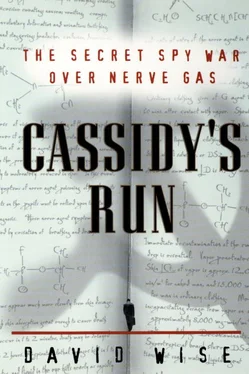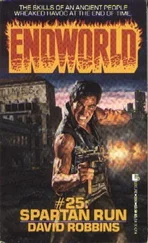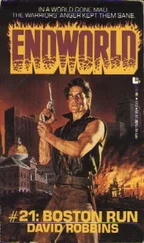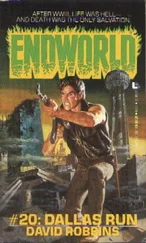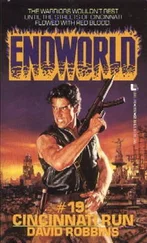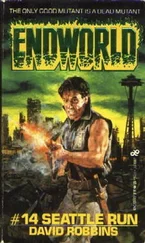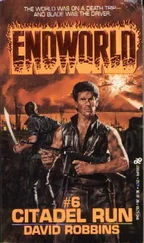The meetings withDanilin almost always took place in the parking lot of a bowling alley in Springfield, Virginia, a Washington suburb. There, Cassidy passed the documents that he had photographed.
“We would meet at nine P.M., always on a Saturday night. I suppose this is when America is out partying and has its guard down.”
Danilin, overjoyed to have a mole inside Edgewood, urged Cassidy to obtain everything he could on the nerve-gas program. He emphasized he wanted as much as possible about the chemical formulas and the makeup of the binary system. “He would say, ‘Find me anything you can on binary.’ He wanted information on all the nerve gases. He asked about VX. He asked about sarin. He asked about GD—‘Get everything you can about it.’”
After two years, and with the Russians well hooked and pushing for every scrap Cassidy could provide, the counterintelligence agents in the FBI decided the moment they were waiting for had arrived. Danilin and the GRU trusted Cassidy.
It was time for the deception.
Joe Cassidy wasa plainspoken man, not by nature guileful. But the FBI agents who originally recruited him had unexpected good fortune; the modest master sergeant possessed the one quality that would carry him through. Joe Cassidy was a natural actor.
And that quality was precisely what the FBI was counting on as the bureau and intelligence officials in the Defense Department began planning the deception late in 1965.
In intelligence operations,deception material is also known as disinformation. Ironically, the very word disinformation, although adopted by U.S. counterintelligence, appears to have originated with the Russian word dezinformatsiya . [1] The FBI’s official intelligence glossary defines disinformation as “carefully contrived misinformation prepared by an intelligence service for the purpose of misleading, deluding, disrupting, or undermining confidence in individuals, organizations, or governments.” Leo D. Carl, The International Dictionary of Intelligence (McLean, Va.: International Defense Consultant Services, 1990), p. 110.
In 1959, the KGB created a disinformation department known as Department D, part of the First Chief Directorate (FCD), headed by General Ivan I. Agayants. Its duties included fabricating documents and planting false intelligence to confuse and mislead foreign governments.
In the Pentagon, an elaborate machinery existed to create and approve disinformation. False information was controlled by a whole series of secret boards under J-3, the operations umbrella of the Joint Chiefs. The FBI’s requests for deception material dealing with nerve gas were referred to one arm of J-3, the United States Evaluation Board (USEB), a little-known interagency intelligence committee. Its members were the heads of the intelligence organizations of the military services, along with representatives from the FBI and the CIA.
The USEB was the first panel to rule on any deception operation that involved the military. After the USEB, the proposal moved over to another unit under J-3, the Special Assistant for Clandestine and Special Activity (SACSA). After SACSA approved the plan, since SHOCKER was an army project, it was sent to the army’s deputy chief of staff for operations (DCSOPS, pronounced “dess-ops”). Finally, after DCSOPS signed off on the proposal, it moved to the army’s Office of the Chief of Research and Development (OCRD), which prepared the feed for the FBI. [2] The Department of Defense has declined to make any comment about Operation SHOCKER. For four years, the United States Army Intelligence and Security Command (INSCOM), in Fort Meade, Maryland, insisted in response to several Freedom of Information Act requests by the author that it had “no record” of Operation SHOCKER under that or any of the several other code names used for the operation over more than two decades. As far as the army was concerned, it never existed. At the author’s behest, Kenneth H. Bacon, Assistant Secretary of Defense for Public Affairs, asked the secretary of the army, Togo D. West, Jr., whether any information about the operation could be released. West ordered a review. On May 27, 1997, Bacon responded to the author, saying that the files had indeed been located but remained classified and would not be released. When subsequently pressed, Bacon said, “There is a security issue here.” He declined to elaborate.
At FBI headquarters, the deception operation was supervised by Eugene C. Peterson, a veteran counterintelligence agent in the Soviet section. A big, burly, professional counterspy, Peterson had the face of a boxer—a broad pug nose with a horizontal scar between intent blue eyes, a face with a lot of miles on it. In the course of his twenty-eight-year career with the FBI, he worked on most of the major Soviet cases of the cold war.
Despite his tough-looking exterior, Peterson was an affable, pleasant man from Aberdeen, South Dakota, where his father drove a laundry truck and his mother worked as the firm’s bookkeeper. Peterson enlisted in the army air corps out of high school, then graduated from Northern State Teachers College in Aberdeen in 1951 and joined the FBI. He began his counterintelligence career in Puerto Rico in 1960. Four years later, Peterson was transferred to headquarters to work against Soviet spies. He rose to chief of the Soviet section in 1976.
Although an elaborate structure of Pentagon boards and committees had approved SHOCKER, the actual control of the operation rested in the hands of a small number of people—Peterson at FBI headquarters, successive case agents at the Washington field office, and across the Potomac in the Pentagon, Taro Yoshihashi, the army’s top counterespionage expert. A quiet, self-effacing man who worked deep in the intelligence bureaucracy, Yoshihashi was a double-agent specialist and thus the FBI’s point of contact inside the Defense Department.
Born in Hollywood, California, to a Japanese-American family, Yoshihashi earned a degree in psychology from the University of California at Los Angeles and joined the army in 1942, not long before the rest of his family was evacuated to a relocation camp in Cody, Wyoming. Assigned to General Douglas MacArthur’s headquarters in Brisbane, Australia, Yoshihashi maintained files on all Japanese Army units with the help of MAGIC, the decrypted messages obtained after the United States broke the Japanese code.
After the war, the army sent him to investigate the biologicalwarfare experiments conducted by the Japanese against civilians in Manchuria. He was assigned to the Pentagon in 1968. As a double-agent specialist, Yoshihashi was also the army’s representative on the staff of USEB.
As in the case of many obscure government panels, USEB’s staff really ran it. “In the five years I was there,” Yoshihashi recalled, “the principals at USEB only met once, in January of 1972. The meeting was in the basement of the Pentagon in one of the J-3 offices.” James J. Angleton, the CIA’s controversial chief of counterintelligence, showed up for the rare meeting. Angleton, who trusted no one, had nearly destroyed the CIA trying to unearth moles who he was convinced were burrowing away inside the agency.
At the meeting, he was true to form. “Angleton was the agency representative. At one point he said, ‘I have a lot of interesting information I could give you, but I’m not sure about your security here.’ I thought, what a lot of b.s.”
Although the CIA, through its membership on USEB, was aware of the nerve-gas deception, it exercised no operational control. In the jargon of the intelligence world, Cassidy was the FBI’s “asset,” not the CIA’s, nor the army’s.
Читать дальше
